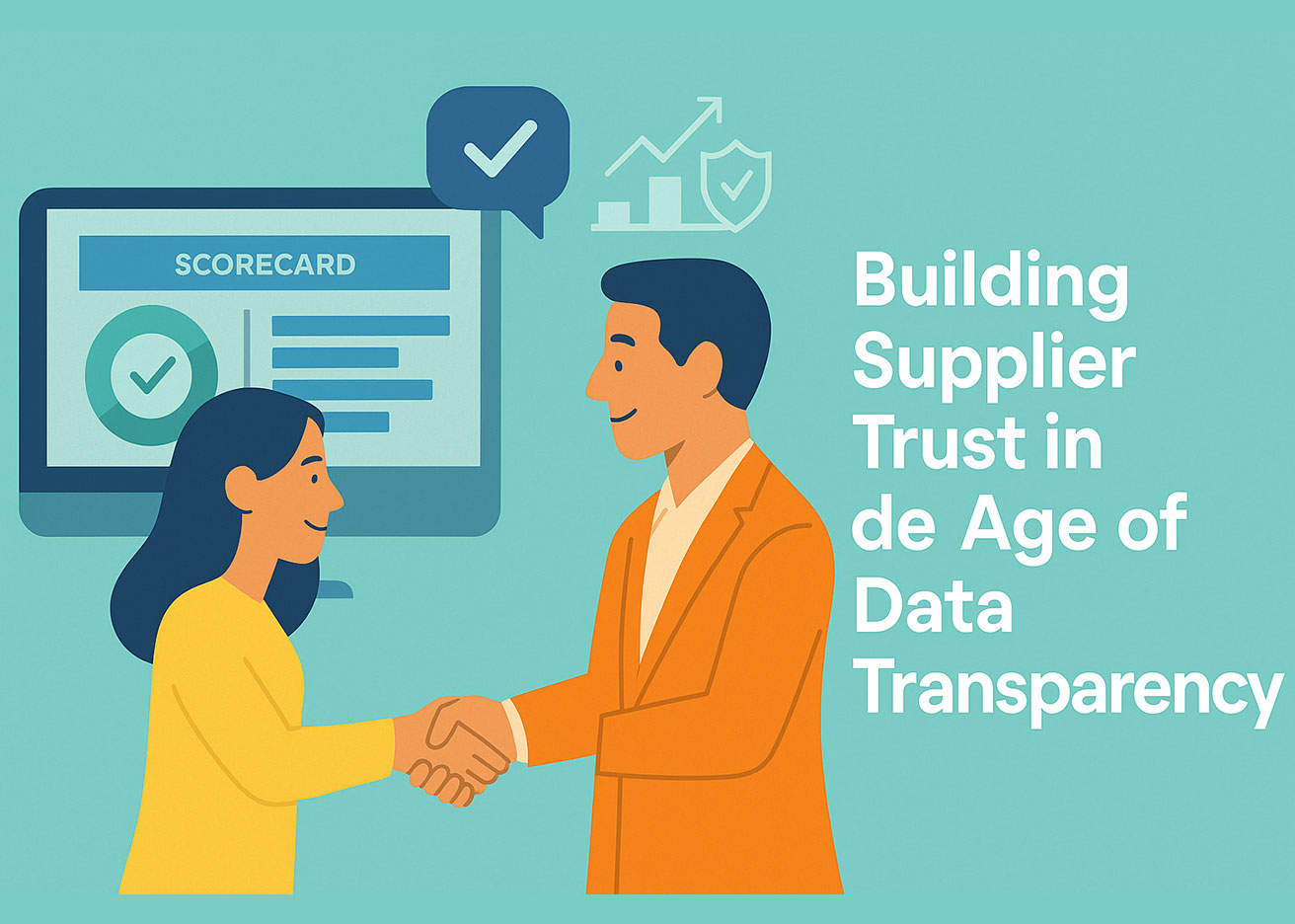Building Supplier Trust in the Age of Data Transparency – SPM
Trust has always been the foundation of strong supplier relationships – but in the age of data transparency, it’s being redefined. Once upon a time, suppliers and buyers operated behind closed doors, sharing only the bare minimum of performance data. Now, with digital scorecards, real-time dashboards, and open communication channels, both sides have access to the same facts. Yet, with all this visibility comes a new challenge: how do you use data to build trust, not tension?
The answer lies not just in technology, but in how it’s used – with fairness, openness, and shared purpose.
1. From Guarded Partnerships to Open Collaboration
The traditional supplier relationship often worked like a game of poker – each side holding their cards close. Buyers demanded results but rarely explained the bigger picture, while suppliers, wary of criticism, hesitated to share their struggles.
Transparency has flipped that dynamic. Modern supplier management systems enable both parties to see the same data – delivery performance, quality metrics, lead times, and even sustainability scores. This shift fosters a sense of shared accountability rather than finger-pointing.
When suppliers understand why metrics matter and how they impact the end customer, they’re more likely to collaborate on improvement, not just compliance.
2. The Power of Digital Scorecards
Digital scorecards are more than just colorful dashboards; they are trust-building tools when implemented correctly.
Instead of vague feedback or quarterly surprises, digital scorecards provide continuous visibility into performance. They allow suppliers to track their progress in real time, spot issues early, and make proactive adjustments.
But the true magic happens when these scorecards are designed to be two-way tools. Suppliers should have the ability to respond, explain variances, or add context – turning the process into a dialogue rather than a verdict.
A supplier might note, for example, that an on-time delivery dip occurred due to a global logistics delay affecting all vendors. By creating space for conversation, scorecards transform from a monitoring device into a collaboration platform.
3. Shared KPIs – Aligning Goals, Not Just Measuring Them
Nothing strengthens trust faster than working toward the same goals. Shared KPIs (Key Performance Indicators) make that possible.
When buyers and suppliers co-create performance metrics – such as on-time delivery, defect rates, or sustainability targets – they move from a transactional to a partnership mindset. These metrics stop being tools for punishment and become measures of collective success.
For example, instead of setting arbitrary cost-reduction targets, a company might define a joint efficiency KPI that rewards both sides for reducing waste or improving material utilization. This shared ownership fosters commitment and mutual respect.
4. Open Feedback Loops – Turning Data into Dialogue
Data transparency only builds trust when it leads to meaningful conversation. That’s where open feedback loops come in.
Rather than waiting for end-of-quarter reviews, leading organizations now host monthly or even real-time feedback sessions with their key suppliers. These discussions revolve around the data – what’s working, what’s slipping, and how both sides can support improvement.
The key is to ensure that feedback isn’t one-sided. Suppliers should feel empowered to challenge metrics, question assumptions, and offer their own insights.
When suppliers know they can voice concerns without fear of blame, they engage more openly, innovate more freely, and build a genuine partnership rooted in transparency and respect.
5. Balancing Accountability and Empathy
While transparency promotes fairness, it can also expose flaws – and that’s where trust is tested.
If a supplier’s performance dips, the goal shouldn’t be to assign blame but to understand why. Maybe a critical raw material became unavailable, or workforce shortages impacted production. A data-driven approach helps highlight patterns, but empathy and communication turn those insights into actionable solutions.
A trusting relationship views performance issues as opportunities for joint improvement rather than grounds for penalties. It’s about balancing accountability with understanding – a skill that distinguishes high-performing supply chains from fragile ones.
6. Technology as an Enabler, Not a Judge
Digital tools like supplier portals, AI-powered analytics, and blockchain tracking systems have revolutionized visibility. However, technology alone doesn’t build trust – people do.
When systems are designed solely to “police” suppliers, they breed defensiveness. But when they’re implemented to share insights and foster collaboration, they create confidence.
For instance, automated alerts that notify both the buyer and supplier of a potential delay invite proactive resolution instead of surprise confrontation. Similarly, predictive analytics that highlight improvement opportunities can help suppliers strengthen their operations before issues arise.
The goal should always be enablement over enforcement.
7. The Long-Term Payoff of Transparent Partnerships
Building trust through transparency is a long game – but one that pays off significantly. Suppliers who feel trusted and informed are more likely to:
- Prioritize your business in tight capacity situations.
- Share innovative ideas and cost-saving solutions.
- Be transparent about risks before they escalate.
- Engage in continuous improvement without external pressure.
Ultimately, transparency creates resilience. When both sides operate from a place of shared truth, they can adapt faster, solve problems collaboratively, and navigate disruption with agility.
8. Reimagining Supplier Trust for the Digital Era
The age of data transparency doesn’t diminish the importance of trust – it magnifies it.
As digital tools continue to evolve, buyers and suppliers have an unprecedented opportunity to create relationships built not on secrecy or suspicion, but on openness, integrity, and shared growth.
The organizations that thrive won’t just be those with the most advanced dashboards – but those that use data as a bridge to understanding. When both sides can see the same truth, they can finally start building the same future.


